Showing Spotlights 9 - 16 of 201 in category All (newest first):
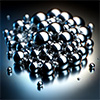 Researchers demonstrate a technique to harness electrochemical energy released when the oxide layer on liquid metals reforms after being ruptured. This approach enables new kinds of soft, stretchable batteries and self-powered devices.
Researchers demonstrate a technique to harness electrochemical energy released when the oxide layer on liquid metals reforms after being ruptured. This approach enables new kinds of soft, stretchable batteries and self-powered devices.
Nov 6th, 2023
 Novel double membrane biobattery design inspired by mitochondria achieves high energy density and biocompatibility, enabling advanced implantable devices.
Novel double membrane biobattery design inspired by mitochondria achieves high energy density and biocompatibility, enabling advanced implantable devices.
Oct 29th, 2023
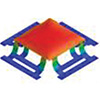 Researchers have created a new type of electricity generator that uses falling water droplets more efficiently, thanks to groundbreaking 4D printing techniques.
Researchers have created a new type of electricity generator that uses falling water droplets more efficiently, thanks to groundbreaking 4D printing techniques.
Oct 19th, 2023
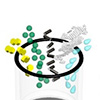 By adopting a single-enzyme approach, scientists have unlocked a new era in enzymatic biofuel cell technology, where one device serves a dual purpose: harvesting electricity and providing an analytical signal for glucose detection, all powered by a single enzyme, glucose oxidase, on both the anode and cathode.
By adopting a single-enzyme approach, scientists have unlocked a new era in enzymatic biofuel cell technology, where one device serves a dual purpose: harvesting electricity and providing an analytical signal for glucose detection, all powered by a single enzyme, glucose oxidase, on both the anode and cathode.
Apr 13th, 2023
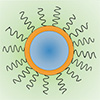 Researchers report single molecule studies of energy transfer using a quantum dot donor with an organic dye acceptor. They demonstrate that suppression of the blinking of the QD donor minimizes the loss of energy, which is achieved by a simple surface treatment method.
Researchers report single molecule studies of energy transfer using a quantum dot donor with an organic dye acceptor. They demonstrate that suppression of the blinking of the QD donor minimizes the loss of energy, which is achieved by a simple surface treatment method.
Apr 10th, 2023
 Triboelectric nanogenerators (TENGs) are rapidly emerging as a cutting-edge technology with the potential to revolutionize the marine industry. As a novel technology that has made significant progress over the past decade, TENGs have been regarded as one of the most efficient methods for harvesting low-frequency ocean energy.
Triboelectric nanogenerators (TENGs) are rapidly emerging as a cutting-edge technology with the potential to revolutionize the marine industry. As a novel technology that has made significant progress over the past decade, TENGs have been regarded as one of the most efficient methods for harvesting low-frequency ocean energy.
Apr 3rd, 2023
 The extensive use of polymer-made, disposable and non-biodegradable COVID-19 pandemic health protectives like surgical face masks, hand gloves and PPE kits, combined with a lack of proper waste recycling systems, considerably increased plastic pollution around the world. Researchers are harnessing a new way to turn these COVID-19 pandemic wastes towards sensor design by fabricating a mask-glove-based contact-separation triboelectric nanogenerator (MG-CS TENG).
The extensive use of polymer-made, disposable and non-biodegradable COVID-19 pandemic health protectives like surgical face masks, hand gloves and PPE kits, combined with a lack of proper waste recycling systems, considerably increased plastic pollution around the world. Researchers are harnessing a new way to turn these COVID-19 pandemic wastes towards sensor design by fabricating a mask-glove-based contact-separation triboelectric nanogenerator (MG-CS TENG).
Jan 20th, 2023
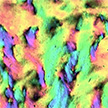 By mimicking a biological cell plasma membrane, i.e. the membrane that separates the interior of the cell from the outside environment, researchers have demonstrated that a 2D reduced graphene oxide membrane can regulate complex polysulfide chemistry in lithium-sulfur batteries. The efficiency of this separator in controlling the polysulfide chemistry and its sub-micron thickness allows to minimize the amount of electrolyte needed, which enables lightweight, high energy density batteries.
By mimicking a biological cell plasma membrane, i.e. the membrane that separates the interior of the cell from the outside environment, researchers have demonstrated that a 2D reduced graphene oxide membrane can regulate complex polysulfide chemistry in lithium-sulfur batteries. The efficiency of this separator in controlling the polysulfide chemistry and its sub-micron thickness allows to minimize the amount of electrolyte needed, which enables lightweight, high energy density batteries.
Dec 16th, 2022
 Researchers demonstrate a technique to harness electrochemical energy released when the oxide layer on liquid metals reforms after being ruptured. This approach enables new kinds of soft, stretchable batteries and self-powered devices.
Researchers demonstrate a technique to harness electrochemical energy released when the oxide layer on liquid metals reforms after being ruptured. This approach enables new kinds of soft, stretchable batteries and self-powered devices.
 Subscribe to our Nanotechnology Spotlight feed
Subscribe to our Nanotechnology Spotlight feed





